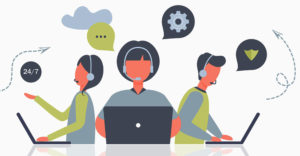I came away from CloudWorld (metaphorically, I was not on site) with a distinct feeling of meh. There were loads of announcements and new technologies that would fill most customers’ shopping carts, but it was hardly overwhelming for me as a CRM analyst.
That’s not a bad thing, believe it or not.
To understand why we need to consider the idea of technical debt. Simply put, this kind of debt accrues when we buy simple solutions to complex problems figuring that we’ll make it all work in the nebulous future. The funny thing about the future is that it is constantly receding, so like any other debt, we pay interest on it well into that future.
The alternative is to spend big upfront to get the right fit of solution for the business problem. Spending big upfront is more costly; however, it eliminates interest payments in perpetuity and is often cheaper in the long run.
Technical Debt
Throughout my career, I’ve experienced or seen technical debt repeatedly, mainly because even if customers wanted to spend big, the solutions were just not up to the task. There was no alternative to taking on technical debt.
These conditions are typical in early markets, and we have many ways to describe them. For instance, a start-up with a new idea brings an MVP or Minimum Viable Product to market. That might sound terrible, but it’s all about what you compare the MVP with. Often, it’s nothing.
Since the beginning of the cloud era, which I think of as the first years of this century, we’ve gone through an accelerated evolution of cloud MVP apps to arrive at products and systems that are very solid today.
The upshot of this evolution has been a constant reduction of technical debt, at least in business applications. Believe it or not, hardware seems to be on a different curve because we see companies like Apple leapfrogging itself with better handheld devices every year or two.
The development of software systems that generate good, working code has been the difference. When the machine does the coding, the time between generations can vanish so that the difference between systems with technical debt and more idealized systems amounts to the effort we can put into no-code or low-code definitions.
CloudWorld Impressions
This has everything to do with CloudWorld. In my opinion, it was a show about the stack and infrastructure, from databases to cloud data centers, as well as the platforms. CloudWorld was designed to say that Oracle has the goods to support global business with minimal technical debt.
That’s because other announcements about things like B2B commerce and the future of health care IT all depend on the infrastructure that supports running apps and the platforms that generate the applications and service them wherever they’re used.
In that light, regardless of your application starting point, a minimal investment in defining your business processes to these systems will result in new apps and very low technical debt.
At least, that’s my impression of CloudWorld. If I’m right, it will take some people a little time to absorb because it’s a very different way of thinking about technology. But absorption will be easy in some regards because the solutions are more solid than anything they’ve seen in the tech era.
Health Care and Finance
I might still have some reservations about the Cerner acquisition, especially since I come from a health care background.
There’s a big difference between health care financial applications and patient care applications. I am skeptical about how much financial apps can improve patient care, and I don’t think we should be positioning financial apps in line with patient care. They’re separate, each does valuable things, and that should be enough.
On the patient care side, the electronic medical record is the workhorse app, and it is way too expensive, in part because that market is still a walled garden. But even that can be resolved if the same advanced development tools can be applied to the problem, and that appears to be one of Oracle’s next hills to climb.
CloudWorld was different from OpenWorld, and it is likely to continue to evolve away from OpenWorld in subtle ways, just as this year’s Dreamforce has evolved from very different beginnings. Customers of both companies might look at this as the end of a Wild West phase, but it may also be the start of a golden age.
























































